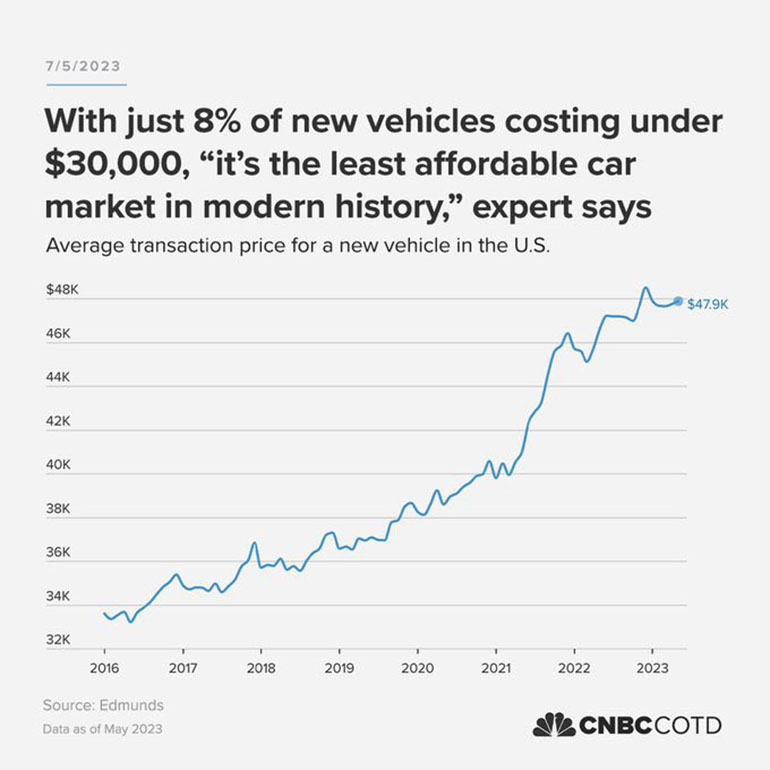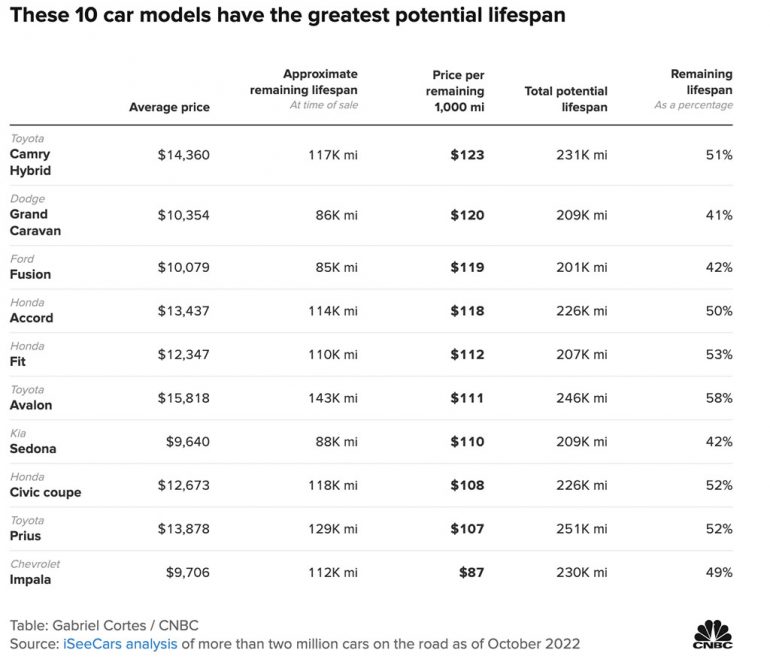
The current state of the car market can be described as the “least affordable car market in modern history,” as stated by CoPilot’s CEO Pat Ryan. Recent reports indicate that buying a car has become increasingly expensive, with new vehicle prices reaching near all-time highs. Additionally, the interest rates for financing car purchases have seen a significant jump. Notably, the availability of affordable new cars in the market has dwindled.
According to CoPilot’s findings, new cars priced under $30,000 now represent just 8% of the market’s supply, compared to 38% before the pandemic. This shift can be attributed to the high demand for fully loaded SUVs and trucks. Automakers have responded to consumer preferences by upgrading their vehicle lineups and reducing the production of less-expensive cars.
Also, don’t forget that you can get discounted new car pricing with a free quote through qualified local dealer partners.
Even before the COVID-19 pandemic, consumer tastes were shifting away from sedans towards more expensive SUVs and trucks. Car buyers were increasingly seeking additional features, such as advanced touch screens, ambient lighting, 360-degree cameras, and heated and cooled seats. As a result, there has been a “war of features” in the industry, as described by Ivan Drury, Edmunds‘ director of insights.

Dealers have increased their inventory of cars equipped with various luxury features to meet the growing demand. Automakers have also adjusted their lineups, introducing high-end packages or trim levels while scaling back on the production of lower-priced vehicles. This strategy aligns with the trend of continuously increasing prices to offer more features and larger vehicle sizes with each redesign.
The average transaction price for new cars reached $47,892 in May, approaching an all-time high, according to Edmunds. The number of vehicles priced above $70,000 has risen from 3% to 10% over the past five years. On the other hand, there are now fewer options available at lower price points. Merely 0.3% of new vehicles sold cost less than $20,000, compared to 8% five years ago. Moreover, vehicles are lasting longer with iSeeCars analysis showing several vehicles with a potential lifespan of over 200,000 miles.

Consequently, more car shoppers find themselves priced out of the new car market. Many buyers on a budget are opting for older cars with higher mileage. While this may seem like a more affordable alternative initially, it can lead to increased ownership costs in the long run.